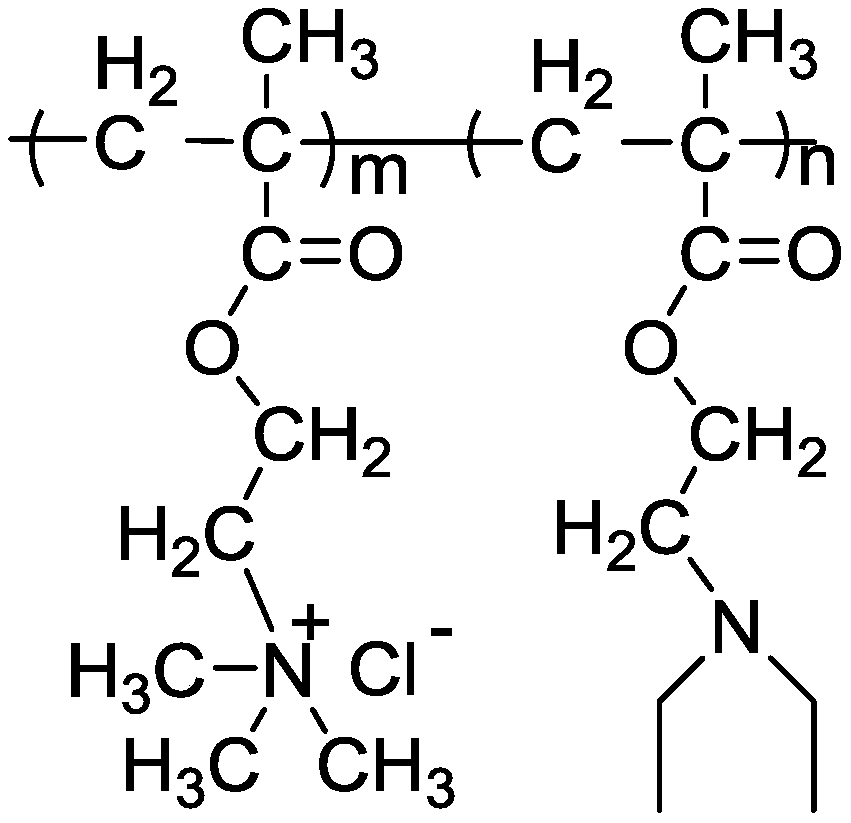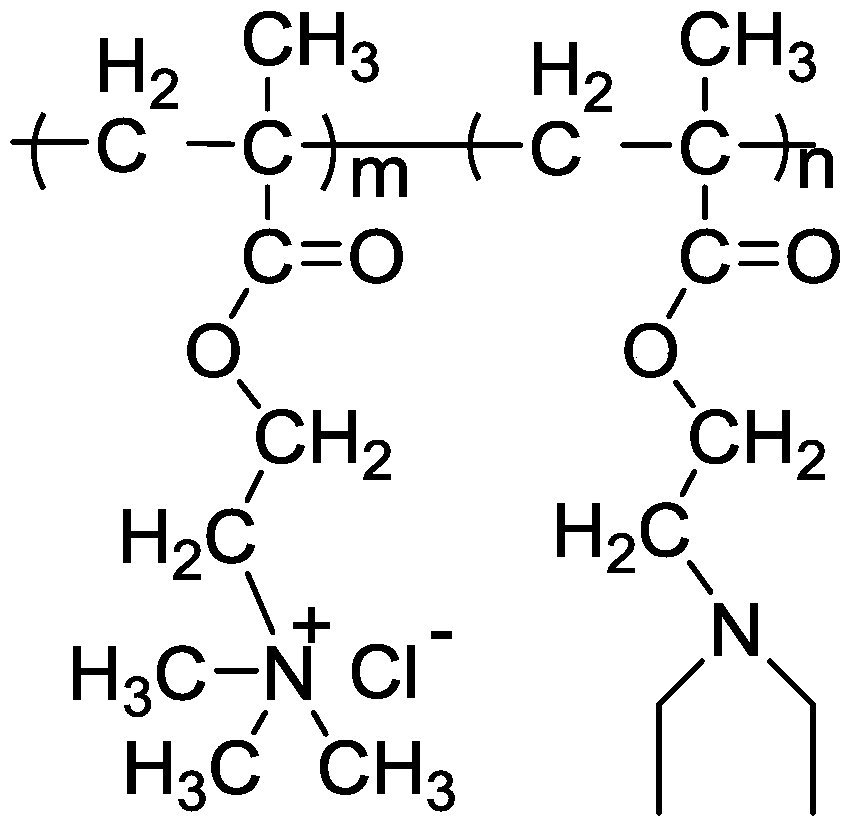PH-responsive heavy oil emulsifier and preparation method thereof
An emulsifier, type heavy oil technology, used in mechanical equipment, piping systems, gas/liquid distribution and storage, etc. problems such as low, to achieve good surface activity and emulsification and viscosity reduction performance, low cost, and solve the effect of difficult handling
- Summary
- Abstract
- Description
- Claims
- Application Information
AI Technical Summary
Problems solved by technology
Method used
Image
Examples
Embodiment 1
[0018] Add 18g of diethylaminoethyl methacrylate and 2g of methacryloyloxyethyltrimethylammonium chloride into a 250mL flask to form an aqueous solution with a total mass concentration of monomers of 20%. The total weight of 0.5% of the initiator was reacted at 70° C. for 8 hours to obtain a thick oil emulsifier.
[0019] Take 50 g of heavy oil (viscosity at 50° C. of 30000 mPa.s), dissolve 2 g of the heavy oil viscosity reducer in Example 1 in 50 mL of distilled water, then add the heavy oil into the emulsifier under stirring, and measure its viscosity at 50° C. It is 241mPa.s, the viscosity reduction rate is 99.26%, and the water precipitation rate is 10% after 2 hours. However, the pH of the emulsion was adjusted to 5-6 with HCl, and the emulsion broke and separated rapidly, and the water separation rate reached more than 80% within 0.5 hours.
Embodiment 2
[0021] Add 16g of diethylaminoethyl methacrylate and 4g of methacryloyloxyethyltrimethylammonium chloride into a 250mL flask to prepare an aqueous solution with a total mass concentration of monomers of 20%. 0.5% of the total mass of the initiator was reacted at 70° C. for 8 hours to obtain a thick oil emulsifier.
[0022] Take 50 g of heavy oil (viscosity at 50° C. of 30000 mPa.s), dissolve 3 g of the heavy oil viscosity reducer in Example 1 in 50 mL of distilled water, then add the heavy oil to the emulsifier under stirring, and measure its viscosity at 50° C. It is 113mPa.s, the viscosity reduction rate is 99.65%, and the water precipitation rate is 11% after 2 hours. However, the pH of the emulsion was adjusted to 5-6 with HCl, and the emulsion broke and separated rapidly, and the water separation rate reached more than 80% within 0.5 hours.
Embodiment 3
[0024] Add 14g of diethylaminoethyl methacrylate and 6g of methacryloyloxyethyltrimethylammonium chloride into a 250mL flask to form an aqueous solution with a total mass concentration of monomers of 20%. 0.5% of the total mass of the initiator was reacted at 70° C. for 8 hours to obtain a thick oil emulsifier.
[0025] Take 50 g of heavy oil (viscosity at 50° C. of 30,000 mPa.s), dissolve 4 g of the thick oil viscosity reducer in Example 1 in 50 mL of distilled water, then add the heavy oil to the emulsifier under stirring, and measure its viscosity at 50° C. It is 74mPa·s, the viscosity reduction rate is 99.77%, and the water precipitation rate is 3% after 2 hours. However, the pH of the emulsion was adjusted to 5-6 with HCl, and the emulsion broke and separated rapidly, and the water separation rate reached more than 80% within 0.5 hours.
PUM
| Property | Measurement | Unit |
|---|---|---|
| Viscosity | aaaaa | aaaaa |
| Viscosity | aaaaa | aaaaa |
| Viscosity | aaaaa | aaaaa |
Abstract
Description
Claims
Application Information
 Login to View More
Login to View More - R&D
- Intellectual Property
- Life Sciences
- Materials
- Tech Scout
- Unparalleled Data Quality
- Higher Quality Content
- 60% Fewer Hallucinations
Browse by: Latest US Patents, China's latest patents, Technical Efficacy Thesaurus, Application Domain, Technology Topic, Popular Technical Reports.
© 2025 PatSnap. All rights reserved.Legal|Privacy policy|Modern Slavery Act Transparency Statement|Sitemap|About US| Contact US: help@patsnap.com


